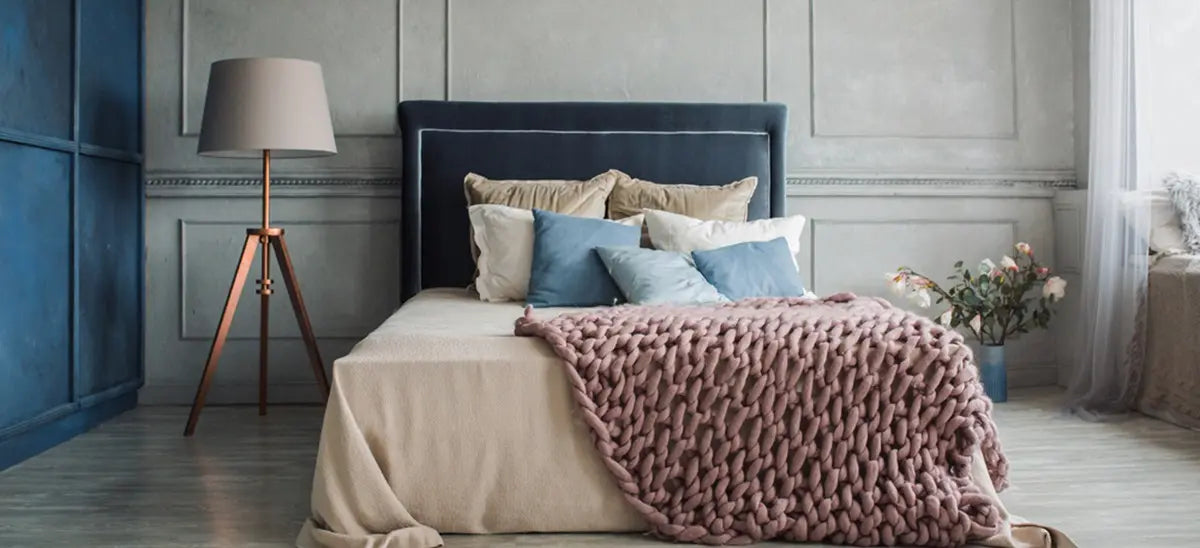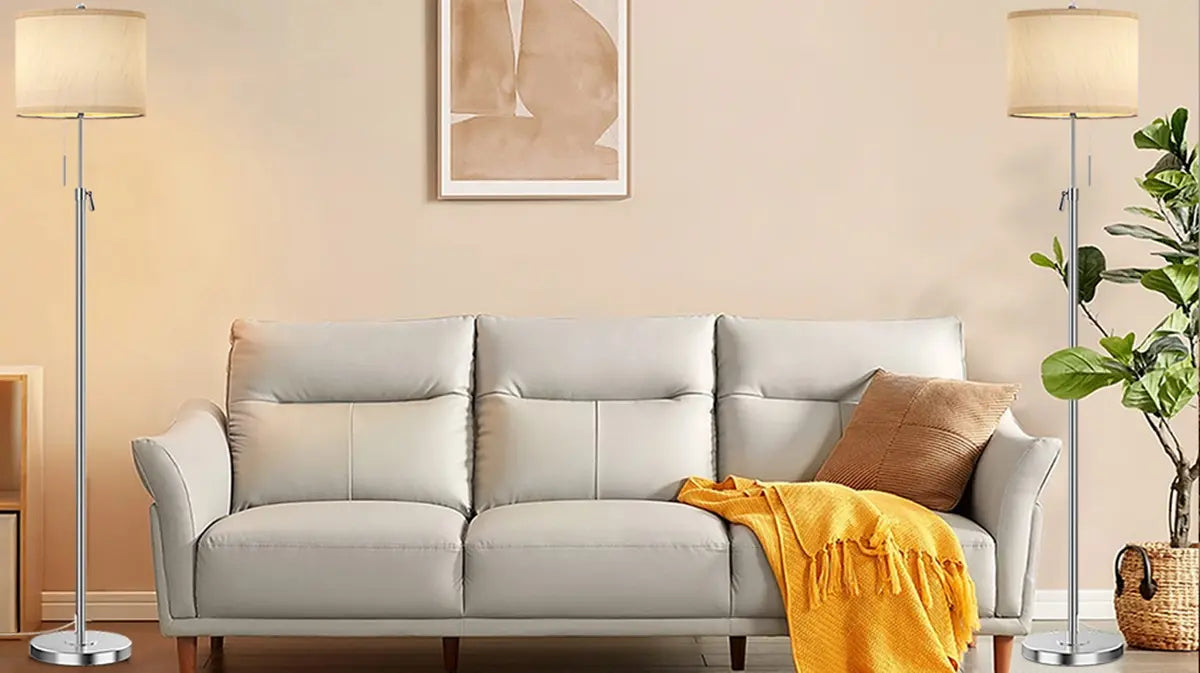Choosing the right wattage for your bedroom floor lamp is more crucial than you might think.
Ever walked into a room that felt just right? The lighting plays a big part in that. So, how many watts is a bedroom floor lamp?
In this blog, you'll discover how to pick the perfect wattage for your space.
Let's dive in and make your bedroom the perfect retreat.
Key Takeaway
For optimal bedroom lighting, a floor lamp should typically use a bulb between 40W and 75W, depending on your specific needs and room size.
What is Wattage?
Defining Wattage in Lighting
Wattage is a measure of electrical power. It tells you how much energy a lamp uses.
Higher wattage usually means a brighter light. A 60W bulb shines brighter than a 40W bulb.
But brightness isn't just about watts. It's also about lumens, which measure light output.
How Wattage Affects the Brightness of a Lamp
More watts generally mean more light. For reading, you might want a higher wattage.
For ambiance, lower wattage creates a cozy feel. Choosing the right wattage balances light and energy use.
Why the Right Wattage Matters for Your Bedroom Floor Lamp
The wattage of your bedroom floor lamp impacts both ambiance and functionality. High wattage can flood the room with light, ideal for activities like reading. Low wattage creates a softer, more relaxing atmosphere, perfect for winding down.
Energy efficiency is another crucial factor. Lower wattage bulbs consume less power, saving on electricity bills. Opting for energy-efficient bulbs, like LEDs, can further enhance savings without sacrificing brightness.
How Many Watts is a Bedroom Floor Lamp
Bedroom floor lamps typically range from 40W to 75W. These wattages cover a broad spectrum of lighting needs.
- A 40W lamp provides a soft, warm glow. It's perfect for creating a cozy ambiance. Ideal for relaxation and unwinding.
- A 60W lamp offers balanced brightness. Suitable for general lighting. It’s great for both relaxation and light reading.
- A 75W lamp delivers bright, clear light. Perfect for tasks requiring focus, like reading or working. It ensures every detail is visible.
Factors Influencing Wattage Choice
Size of the Bedroom and Lamp Placement
The size of your bedroom plays a big role. A larger room may need higher wattage. Small bedrooms might require less.
Where you place the lamp matters too. Near the bed for reading? Or in a corner for ambient light? Placement affects wattage needs.
Purpose of the Lamp
Consider what you use the lamp for. Reading requires brighter light. Ambient lighting can be softer. Think about your main use.
Types of Bulbs Used
Different bulbs use wattage differently. Incandescent bulbs consume more power. LEDs give more light per watt. CFLs are a middle ground.
How to Calculate the Right Wattage
Simple Steps to Calculate the Required Wattage
- Measure Your Room Size: Calculate the square footage. Multiply the length by the width.
- Determine Your Lighting Needs: Decide on the purpose. Reading, ambiance, or general lighting?
- Apply the Formula: Use 1.5 watts per square foot for general lighting. For task lighting, 2.5 watts per square foot is ideal.
Examples of Wattage Calculations for Different Bedroom Setups
Example 1: Small Bedroom (10x10 feet)
Square Footage: 100 sq ft
General Lighting: 100 sq ft x 1.5 watts = 150 watts total
Task Lighting: 100 sq ft x 2.5 watts = 250 watts total
Example 2: Large Bedroom (15x20 feet)
Square Footage: 300 sq ft
General Lighting: 300 sq ft x 1.5 watts = 450 watts total
Task Lighting: 300 sq ft x 2.5 watts = 750 watts total
Adjust these totals based on the number of lamps. For multiple lamps, divide the total wattage by the number of lamps.
Alternatives to Traditional Wattage
Lumens as a Measure of Brightness
Lumens measure the amount of light a bulb emits. Unlike wattage, which measures energy use, lumens focus on brightness.
More lumens mean more light. It's a straightforward way to gauge a bulb's brightness.
How LED Wattage Equivalents Differ from Traditional Incandescent Bulbs
LEDs use less energy to produce the same amount of light as incandescent bulbs. For example, a 60W incandescent bulb can be replaced by a 10W LED bulb.
This equivalence helps you choose the right bulb without sacrificing brightness. LEDs are more efficient and have a longer lifespan.
Switching to lumens and LED wattage equivalents can simplify your lighting choices. They provide the brightness you need with lower energy consumption.
Tips for Selecting the Best Floor Lamp for Your Bedroom
Expert Tips for Choosing the Best Floor Lamp Wattage
Understand Your Needs: Identify the primary use of the lamp. For reading, choose higher wattage. For ambiance, lower wattage works best.
Match the Lamp to Your Room Size: Larger rooms need more light. Choose higher wattage for larger spaces. Small rooms can use lower wattage.
Consider the Style: Pick a lamp that complements your bedroom decor. Style affects the overall feel of the room.
Related: How to Choose a Floor Lamp - Expert Advice
Considerations for Adjustable and Dimmable Floor Lamps
Flexibility in Lighting: Adjustable lamps let you direct light where needed. They are great for focused tasks like reading.
Dimmable Options: Dimmable lamps offer versatility. Adjust brightness to suit different activities and moods.
Energy Efficiency: Look for LED options. They are energy-efficient and have dimmable capabilities.
Final Thoughts
Choosing the right wattage for your bedroom floor lamp can significantly impact your comfort and room ambiance.
We hope this guide has provided you with valuable insights to make an informed decision. We’d love to hear your experiences and thoughts. Please share your comments below.
For more tips and insights on floor lamps, visit our floor lamp resources.
FAQs
What is the ideal wattage for reading in bed?
A bulb ranging from 40W to 60W is usually ideal for reading in bed. This provides 450 to 800 lumens, suitable for most readers. Older adults might prefer the higher end for better clarity.
Can using a higher wattage bulb damage my floor lamp?
Yes, exceeding the lamp's recommended wattage can cause overheating and potential damage. Always check and follow the maximum wattage rating on your lamp.
How does the type of bulb affect wattage requirements?
LED and CFL bulbs are more energy-efficient than incandescent bulbs. For example, a 60W incandescent can be replaced by a 10W LED or a 15W CFL, providing the same brightness with less power.
Are LED bulbs better for bedroom floor lamps?
LED bulbs are ideal for bedroom floor lamps due to their energy efficiency, long lifespan, and lower heat emission. They also offer various brightness and color temperature options.
How do I make my floor lamp more energy-efficient?
Switch to LED bulbs for better energy efficiency. Use dimmable LEDs to adjust brightness as needed, and choose lampshades that direct light effectively.










Leave a comment
All comments are moderated before being published.
This site is protected by hCaptcha and the hCaptcha Privacy Policy and Terms of Service apply.